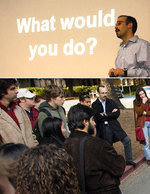If you’re any kind of soccer fan, you know the meaning of Total Football. Wikipedia defines it as "… a system where a player who moves out of his
position is replaced by another from his team, thus retaining their
intended organizational structure. In this fluid system no footballer
is fixed in their intended outfield role… Total Football depends largely on the adaptability of each footballer within the team to succeed."
In the world of soccer, Total Football created an entirely new paradigm for how the game should be played. The fluidity, adaptability, and ultimately, the creativity it engendered markedly raised the performance of teams who adopted it. And while the system of Total Football is what enabled players to play better than they ever had before, for the system to work required a special type of player. Soccer legend Rinus Michels put it this way:
Total Football… places great demands on individual and team tactical excellence… An absolute prerequisite, to master such a team tactical aspect, is that all the players possess a positive mentality…
Back to the world of metacool. I believe there’s something called Total Design. Total Design is to normal design as Total Football is to normal soccer. It’s what happens when you combine wickedly good design thinkers with a human-centered, business-sensitive design process. Design thinkers who know how to work across professional boundaries, who can play any position, who are flexible, adaptable, yet capable of driving toward a unified goal. Total Design is about tangible results that change the world for the better, and those results can be, should be, will be, awesome.
You heard it here first: 2006 is the year of Total Design.


